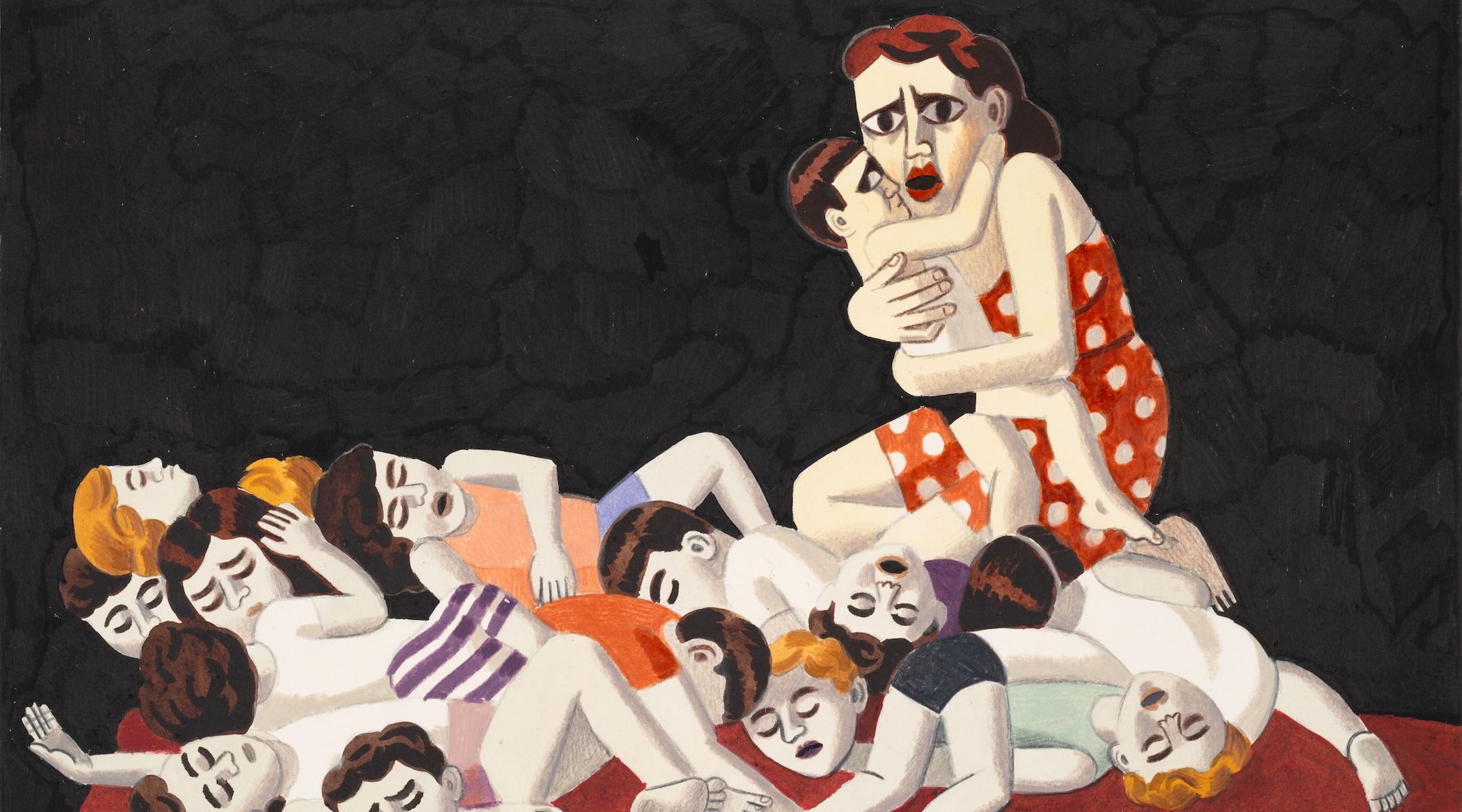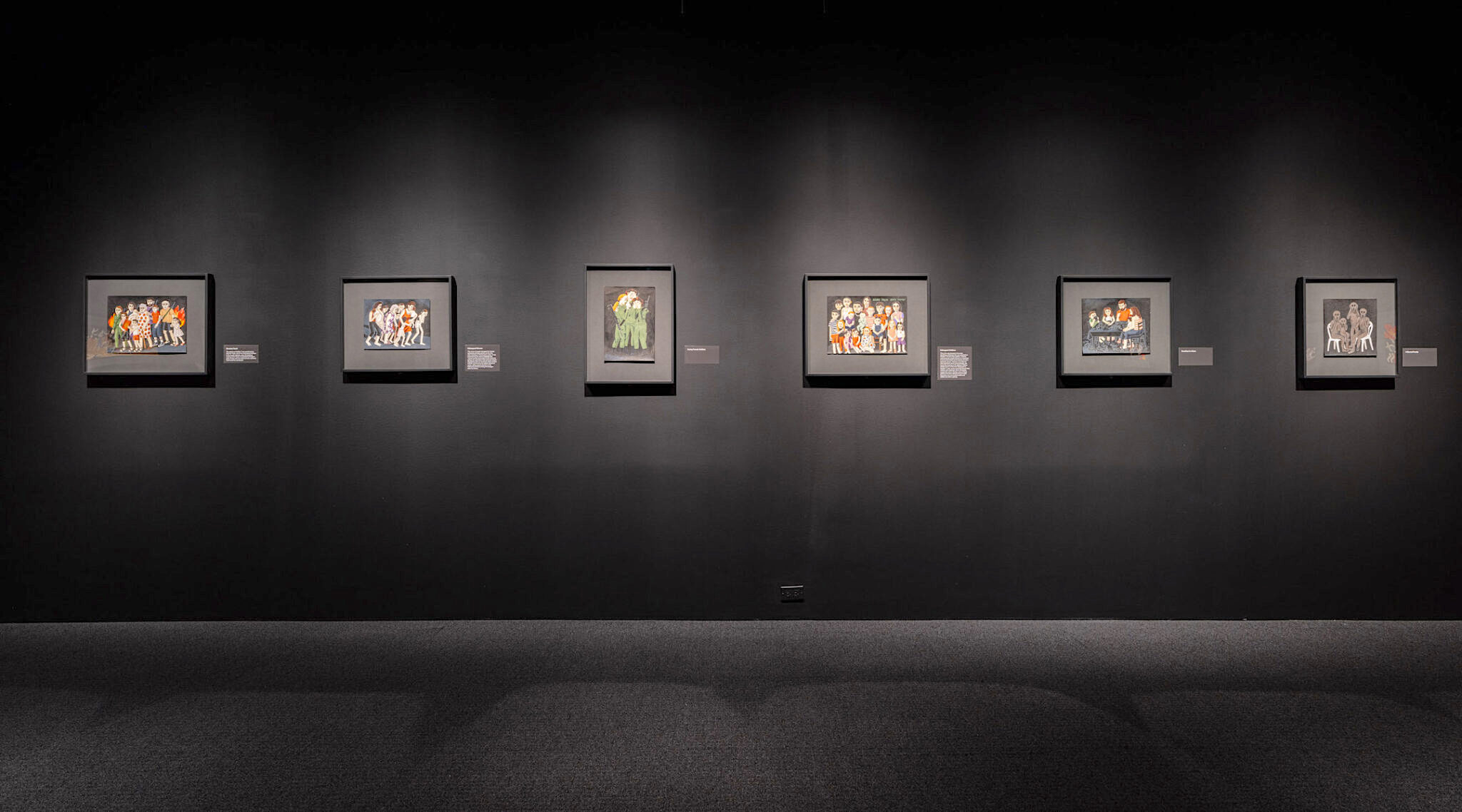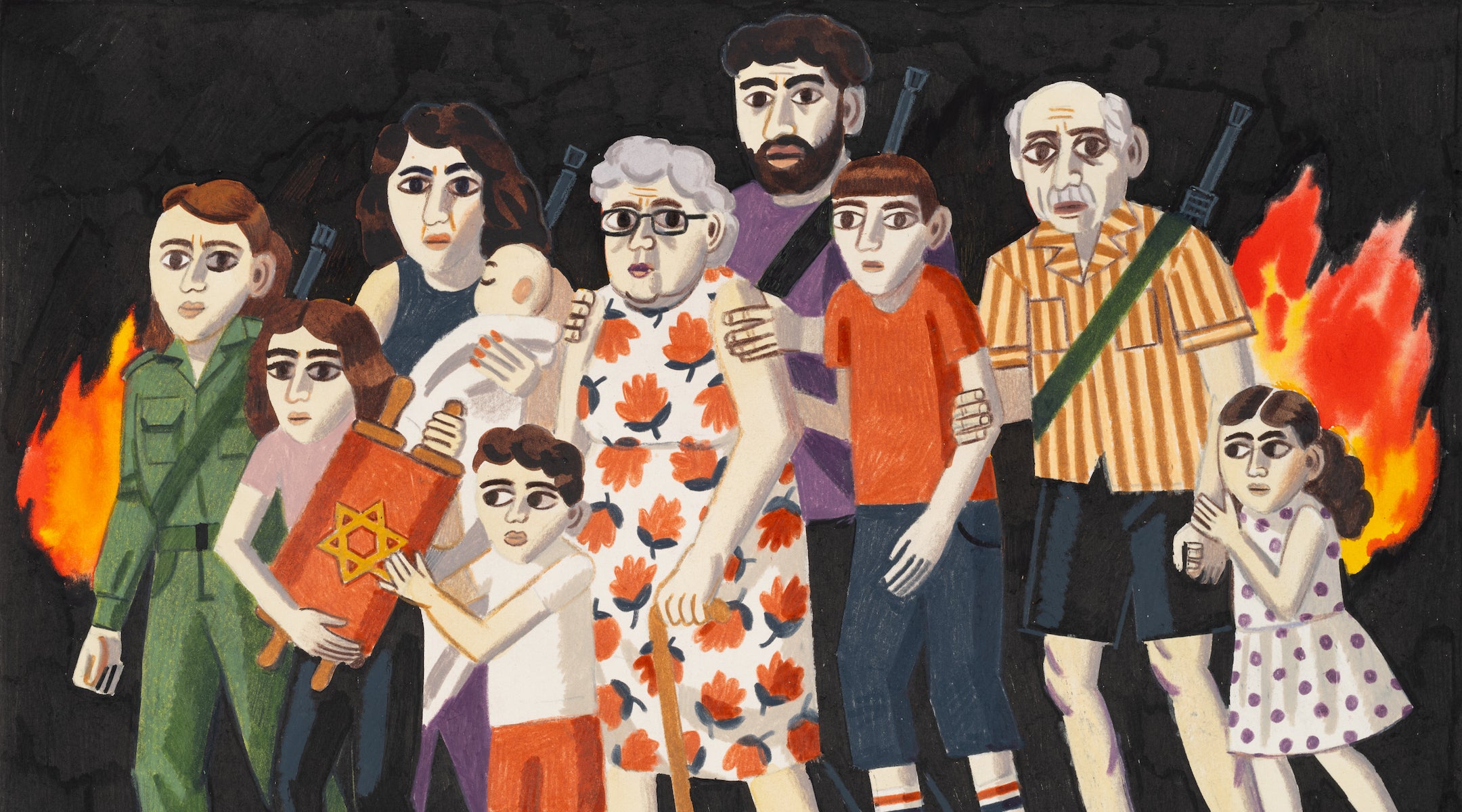(New York Jewish Week) — A family of ashen, burned bodies sit around their kitchen table, their expressions frozen in terror — hands pressed against gaping mouths, silently screaming. An elderly couple, hands bound in rope behind their backs, embraces as blood pools around them and flames lick at their feet. A mother grips her son close to her chest as she looks over a pile of dead bodies.
These horrifying scenes are part of “7 October 2023,” a new exhibit of 12 drawings created by Israeli artist Zoya Cherkassky in response to the Hamas attacks on that day. The colorful but violent and gut-wrenching works, which are now on view at the Jewish Museum on the Upper East Side, are inspired in part by Pablo Picasso’s renowned “Guernica,” which he painted to show the world the violence and inhumanity during the Spanish Civil War.
“Museums exist to be custodians of world cultural heritage, and this kind of savagery and barbarism is the antithesis of that,” James Snyder, who took over as the new director of the Jewish Museum last month, told the New York Jewish Week. “We need to speak out against them and we need to do what we can to educate and engage.”

An Israeli mother holds her son and looks at a mass of bodies in “Massacre of the Innocents.” (Drawing by Zoya Cherkassky)
When Hamas attacked Israel on Oct. 7, killing about 1,200 people and kidnapping around 240, Snyder said he immediately began thinking about the unique responsibility that the Jewish Museum — and museums around the world — had to meet the moment.
“I started thinking about how after World War I, Dadaism and surrealism were new vocabularies that got created coming out of the chaos of that moment,” Snyder said. “We thought we could create a similar opportunity to show installations of work by artists at this moment.”
“It’s cultural activism; it’s art activism,” he explained. “It’s not about the complex politics of what’s going on. It’s about artists producing work in response to trauma and tragedy happening in the world.”
Cherkassky’s exhibit at the Jewish Museum, which will run until Feb. 19, is the first time her Oct. 7 drawings are being displayed in public. Two months is an atypically fast turnaround time for museums, Snyder said, but the material was too important to wait.
Immediately after the terrorist attack, Snyder said that he and the museum’s curators began to develop an ongoing series to address the attack and the subsequent war, and to provide “a forum for dialogue and reflection on the role of art and culture during these complex times,” according to a press release. In addition to art exhibitions, the museum is preparing public programs, a speaker series and opportunities for staff to engage more deeply with the cultural ramifications of the conflict.
Cherkassky, who lives and works in Tel Aviv, began drawing the scenes that became “7 October 2023” just a few days after the Hamas attacks in Israel. She had temporarily fled to a friend’s apartment in Berlin with her young daughter, bringing along the art supplies she knew she would need to process the tragedy.
“When we got ready to leave home, I packed some drawing and art supplies because I knew something was going to come. In a moment like this, you cannot think about anything else, so I knew I would be making art about it,” Cherkassky, who was unavailable for an interview with the New York Jewish Week, told the Times of Israel in October.“I grabbed pencils, wax crayons, watercolors — whatever. My whole [Tel Aviv] studio can’t fit in one bag, but it’s enough for me to do what I want.”

The 11 x 17 drawings in “7 October 2023” are displayed in an all-black room. (Courtesy of The Jewish Museum)
The series is one of the first to be displayed under the helm of Snyder, who began his tenure in early November after four years as the executive chairman of the Jerusalem Foundation and, before that, 22 years as the director of The Israel Museum in Jerusalem.
Snyder first worked with Cherkassky in 2018, when The Israel Museum exhibited her work “Pravda” (“Truth”), which depicted her experience as an immigrant to Israel from the Soviet Union. And this isn’t her first time making wartime art: A native of Kyiv, she has also been painting and drawing art in response to Russia’s invasion of Ukraine for nearly two years. In her series “Before and After” Cherkassky juxtaposes art she made about her childhood in Ukraine with present-day scenes of the war-town country.
At the Jewish Museum, Cherkassky’s Oct. 7 artwork is like “bereshit,” said Snyder, using the Hebrew word for the first book of the Torah, meaning “creation” or “genesis.” “It’s the day everything started,” he said.
“Museums are places of repose and reflection,” Snyder said. “We felt that as a place of education and engagement, we needed to shape an action plan that would offer opportunities to educate our staff, to engage with our audience and with the public, and to provide opportunities for artists to show work responding to the tragedy unfolding in the Middle East.”
The first guest in the Jewish Museum’s speaker series will be Israeli author Ruby Namdar, who will be in conversation with Snyder about the cultural ramifications of the Israel-Hamas war in the diaspora on Feb 5. Talks with Cherkassky and Israeli artist Michal Rovner are forthcoming this spring.
The New York Jewish Week brings you the stories behind the headlines, keeping you connected to Jewish life in New York. Help sustain the reporting you trust by donating today.





